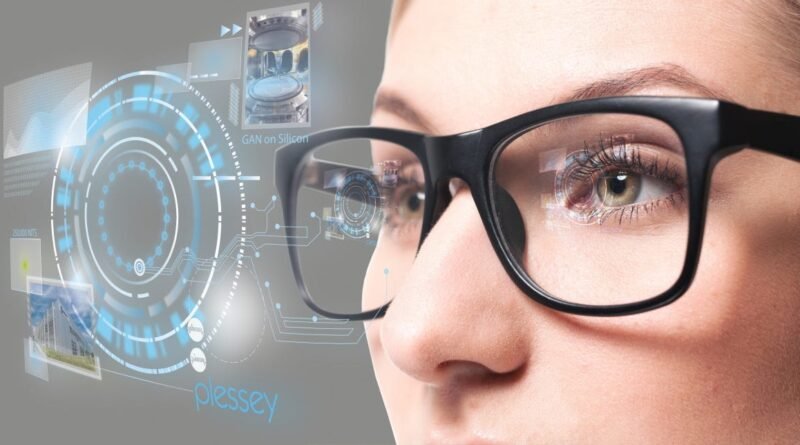Smart Glasses Technology: The Future of Wearable Tech
Smart glasses technology is revolutionizing the way we engage with the virtual global. Imagine on foot down the road and getting instructions properly in front of your eyes or translating an overseas language in actual time. These futuristic situations are becoming a truth with smart glasses. In this text, we will find the captivating world of brilliant glasses, how they work, their bundles, and what fate holds for this momentous innovation.
What Are Smart Glasses?
Shrewd glasses are basically wearable PC frameworks integrated into eyeglasses. They offer a heads-up show (HUD) that licenses clients to get admission to and draw in with virtual records without turning away from their ordinary view. It resembles having a cellphone show directly toward the front of your eyes, by and large, prepared while you want it.
How Do Smart Glasses Work?
Smart glasses combine numerous technologies to function seamlessly. They have built-in shows, cameras, sensors, and, once in a while, even an audio system. When you place on a couple of clever glasses, you are essentially carrying a mini-computer for your face.
The display initiatives images or information without delay onto the lenses, growing an augmented reality (AR) revel in wherein virtual records overlay the real international. For more insights on technology trends and developments, visit our blog at techblog123.com.
History and Evolution
The concept of clever glasses isn’t always new. It dates again to the 1960s while specialists explored different avenues regarding head-laid out shows. In any case, it wasn’t till Google Glass’ delivery in 2013 that the thought got standard interest. Despite initial setbacks, improvements in generation and design have propelled smart glasses into a brand-new technology, with more delicate and practical fashions available these days.
Key Features of Smart Glasses
Smart glasses come with a variety of features designed to enhance user experience:
- Heads-Up Display (HUD): This trademark allows in clients to see data without redirecting their advantage from this present reality.
- Augmented Reality (AR): Overlays digital statistics at the bodily environment.
- Voice Control: Numerous astute glasses might be worked through voice orders.
- Touchpad: Some fashions have contact-touchy controls at the frame.
- Camera: Integrated cameras for pix, films, and real-time facts seize.
- Connectivity: Bluetooth and Wi-Fi connectivity for syncing with different devices.
Popular Brands and Models
Several tech giants and revolutionary startups have entered the smart glasses market. Some popular models include:
- Google Glass: The pioneer that brought smart glasses to the public’s attention.
- Microsoft HoloLens: Known for its advanced AR capabilities.
- Snap Spectacles: Focused on social media integration and capturing moments.
- Vuzix Blade: Balances everyday wearability with robust AR features.
Applications in Everyday Life
Smart glasses have a wide range of applications that can enhance everyday experiences:
- Navigation: Get turn-by-turn directions without looking at your phone.
- Fitness: Track your workouts and health metrics hands-free.
- Photography: Capture photos and videos from a first-person perspective.
- Communication: Read messages and notifications without taking out your phone.
- Entertainment: Watch videos and play AR games on the go.
Impact on Different Industries
Smart glasses technology is not just for personal use; it has significant implications across various industries:
- Healthcare: Surgeons can get entry to patient information and imaging in actual time.
- Manufacturing: Workers can receive hands-free instructions and safety information.
- Retail: Enhances the shopping experience with digital attempt-ons and product facts.
- Education: Provides immersive learning experiences through AR.
Advantages of Smart Glasses
Smart glasses offer numerous benefits:
- Increased Productivity: Hands-free access to information can streamline workflows.
- Enhanced Safety: Reduces the need to look away from critical tasks.
- Convenience: Quick access to digital information without reaching for another device.
- Immersive Experiences: AR capabilities provide engaging and interactive experiences.
Challenges and Limitations
Despite their potential, smart glasses face several challenges:
- Battery Life: Limited battery life can hinder prolonged use.
- Privacy Concerns: Integrated cameras raise issues regarding privacy and data security.
- Cost: High-end models can be expensive, limiting accessibility.
- Social Acceptance: Wearing smart glasses in public can attract unwanted attention.
Future Prospects
The future of smart glasses technology looks promising. As technology advances, we are able to count on:
- Improved Battery Life: Longer utilization times with greater efficient power control.
- Better Design: Sleeker, greater fashionable designs that resemble ordinary eyeglasses.
- Enhanced AR Experiences: More state-of-the-art AR abilities for richer interactions.
- Wider Adoption: As expenses decrease and social norms shift, smart glasses may become more commonplace.
Conclusion
The smart glasses era is at the leading edge of a wearable tech revolution. With their capability to seamlessly integrate virtual data into our daily lives, they preserve the ability to transform how we engage with the world. From personal use to expert packages, clever glasses are paving the manner for an extra-linked and augmented fact.
